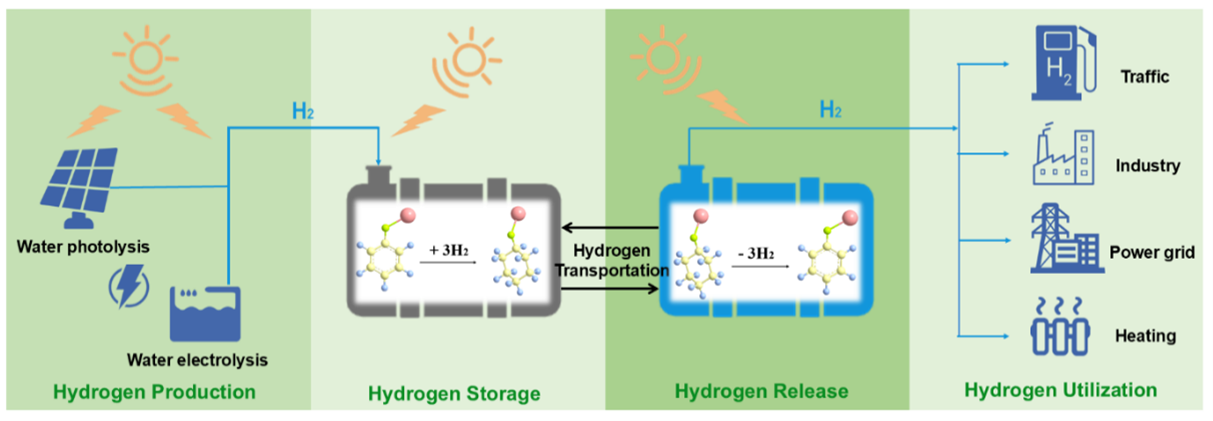Hydrogen, possessing a high energy density of 142 MJ/kg, serves as an alternative energy vector because of its cleanliness and natural abundance. Nevertheless, storing hydrogen in a condensed matter continues to pose a daunting challenge. In recent time, a research effort led by Prof. CHEN Ping and Prof. HE Teng from the Dalian Institute of Chemical Physics (DICP), Chinese Academy of Sciences (CAS), has developed a new family of hydrogen storage materials, namely metalorganic compounds (MOCs). However, there are still several drawbacks such as high temperatures of reactions (>140 °C), poor selectivity, and sluggish kinetics which need to be overcome. Therefore, the development of an efficient catalyst to realize the rapid reversible hydrogen storage under mild conditions has become a key challenge.
Until recently, the research group led by Prof. CHEN Ping and Prof. HE Teng, in collaboration with Assoc. Prof. RAO Li from Central China Normal University, successfully developed a solar-driven reversible hydrogen storage system using sodium cyclohexanolate/phenoxide pair, offering a new technical means for efficient hydrogen storage. This study was published in Angewandte Chemie International Edition.

Researchers focused on a representative pair, i.e., sodium cyclohexanolate/phenoxide pair, which utilized solar energy to reversibly store and release hydrogen. Experimental results demonstrated that the Rh/TiO2 catalyst is capable of facilitating reversible hydrogen storage under photocatalytic reactions. Remarkably, the dehydrogenation rate is ca. 2 orders of magnitude higher than that of the thermocatalytic reactions. Moreover, under the natural light conditions, a significant conversion and selectivity of the dehydrogenation from sodium cyclohexanolate to phenoxide was observed.
Theoretical calculations indicated that light has two primary functions: low-frequency light provides heat to the reaction, while high-frequency light drives the desorption of the end product from the surface of catalyst. This study offers a pathway to a sustainable solar-driven hydrogen energy system.
‘This work undoubtedly unveils the pivotal interaction in photocatalysis, highlighting a rational avenue to the activation of commercially valuable and challenging reactions through the development of energy-efficient nanometal photocatalysts and the use of solar light to enable the reversible hydrogen storage of MOCs,’ said Prof. CHEN.
‘Furthermore, numerous MOCs remain worthy of further investigation because of their ideal range enthalpy of dehydrogenation, following the collaboration with theoretical experts,’ added Prof. HE.

